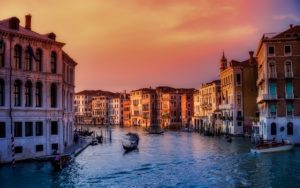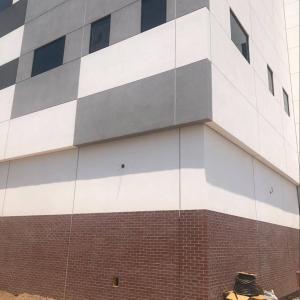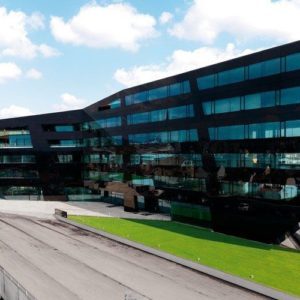Historic building restoration helps preserve a region’s history, culture, and legacy. Historic restoration also protects the environment by reusing existing buildings, which diminishes landfill waste and the use of natural resources.

However, while historic building restoration encourages preserving original materials, any component damaged beyond repair or not meeting current codes will need upgrading or replacement. These types of improvements must strive to maintain the original aesthetics and character of the building.
For example, for building facade historical restoration or replacement, Sto’s The A.R.T. of reStore® program offers an innovative solution for restoring and maintaining a building’s cultural facade. Our products can also improve a structure’s energy efficiency, safety, and occupant comfort level.
The Pros of Historic Preservation and Restoration
Historic preservation and restoration of community landmarks can provide economic, sustainable, and cultural benefits to building owners and the community. However, successfully achieving these benefits typically requires the help of a qualified and experienced historic building restoration expert.

Economic Advantages of Historic Restoration
- Increases real estate values and encourages local businesses, which helps keep historic spaces economically viable.
- It allows for the continued use of high-quality, durable building materials. For instance, historic masonry restoration preserves the character and cultural value of historical buildings’ facades.
- Existing usable space—quicker occupancy.
- Rehabilitation often costs less than new construction.
Benefits of Retrofitting Historic Buildings for Sustainability
Recycling of building materials
- Reduces the need for new materials, saving natural resources
- Less construction and demolition debris, reduces landfill waste
- Less hazardous material debris
Energy savings
- No energy need for demolition and new construction
- Reuse of embodied energy in building materials and systems
- Retrofitting allows for more energy-efficient materials, like wall systems, windows, doors, etc.
Cultural Advantages of Historic Building Restoration
- Historic restoration helps retain a community’s history, aesthetics, and appeal.
The National Historic Preservation Act (NHPA)
In 1966, Congress established the National Historic Preservation Act (NHPA). The act mandated the active use of historic buildings to preserve our national heritage and for public benefit. Following its passage, the Secretary of the Interior established the Standards for the Treatment of Historic Properties to guide historic building preservation design and practice in America. Furthermore, all grant-in-aid projects assisted through the National Historic Preservation Fund require the Standards for the Treatment of Historic Properties, as codified in 36 CFR 68.
The Standards offer four approaches to treating historic properties: preservation, rehabilitation, restoration, and reconstruction. The treatment depends on the property’s historical significance, physical condition, proposed use, and intended interpretation. All approaches allow for code-required work to make properties functional, including the limited and sensitive upgrading of plumbing, mechanical, and electrical systems.
Preservation
Preservation involves applying measures necessary to sustain the existing integrity, form, and materials of a historic building. The work includes steps to stabilize and protect the structure, focusing on ongoing repairs and maintenance of historic features and materials rather than large-scale replacement and new construction. Preservation does not include new exterior additions.
Rehabilitation
Rehabilitation involves repairing, altering, and adding to a historic building while preserving those features or portions which convey its architectural, historical, or cultural values. Notably, rehabilitation allows for the replacement of deteriorated features; however, the replacements must match the old color, design, texture, and, if possible, materials.
Restoration
Restoration should accurately depict a property’s character, form, and features from a particular time. To accomplish this, a builder must remove building components from other periods and reconstruct missing parts from the restoration time. In addition, builders can replace deteriorated features with new features that match the original color, design, texture, and, if possible, materials.
Reconstruction
Reconstruction involves designing and constructing a new building to match the appearance of a structure from a specific historical time.
STO’s Complete Approach to Historic Building Restoration
Sto offers an innovative solution to building facade historical restoration – the A.R.T. of reStore™ – aesthetics, repair, and transformation. The A.R.T. of reStore™ provides all the materials and services needed to maintain and restore your historic building’s facade. In addition, our product’s engineering can enhance the building’s energy efficiency, safety, and occupant comfort level.
ReStore™ offers four levels of restoration, from simple maintenance to remove dirt and mold to a complete facade restoration with all the support and products you need.
- Clean and Recoat: A basic program to remove dirt, mildew, and mold, while refreshing or updating the facade’s color.
- Repair and Refinish: A program to repair minor damage to stucco or EIFS facades before it becomes a significant problem.
- Overclad: A cost-effective program to fix moisture infiltration problems and improve the facade’s aesthetic appeal and energy efficiency.
- Remove and Reclad: New cladding provides a more efficient solution if the exterior wall has deteriorated beyond repair.
Sto’s Comprehensive Repair Guide
Sto’s Comprehensive Repair Guide addresses 30 of the most common problems affecting EIFS, concrete, stucco, and masonry with step-by-step illustrated solutions.
Click here to download a copy of Sto’s Repair Guide.
Sto’s Endless Aesthetic Options
Sto offers the aesthetic flexibility to replicate any historic facade, including brick, stone, concrete, and more, with total design freedom in endless color, texture and material options. In addition, Sto Studio can assist with suggestions on colors, textures and materials to help restore your historic building with a high-performing, sustainable, beautiful, fully-engineered cladding system.
Sto Studio
Sto Studio will assist your architectural design process and ensure that your historic building restoration will attain its maximum potential. We work to produce a complete facade concept, including material and color options, to preserve the original aesthetics and character of the building. In addition, we generate a series of color renderings that will help determine the most acceptable facade to maintain the cultural integrity of the historic building.
Restoration of the Lido Beach Towers, Long Island, NY USA

Restoration of the 100-year-old Lido Beach Towers condominium community restored it to its former glory. It also showcases the potential of StoTherm ci Lotusan® EIFS as a retrofit method for deteriorating buildings. In addition, the aesthetically pleasing second skin approach of EIFS significantly enhanced the structure’s sustainability and energy efficiency.
StoTherm® ci Lotusan®
Sto’s continuous insulation wall system (EIFS), the StoTherm® ci Lotusan®, provides an energy-efficient, high-performance wall cladding. It combines several proven components: StoGuard®, a waterproof air barrier, StoTherm® insulated cladding and drainage, and Stolit® Lotusan, a textured finish with self-cleaning properties.
Best Practices for Historic Building Restoration
The best practices for historic building restoration should preserve the original aesthetics of a structure while retaining and repairing the original building’s features. However, it should also allow new technologies and equipment to meet applicable codes, ensure occupants’ comfort and safety, and protect the environment through sustainable building materials and practices.
Don’t hesitate to contact Sto professionals for more on how our A.R.T. of reStore® solutions and Sto Studio can help you with your historic building restorations.


